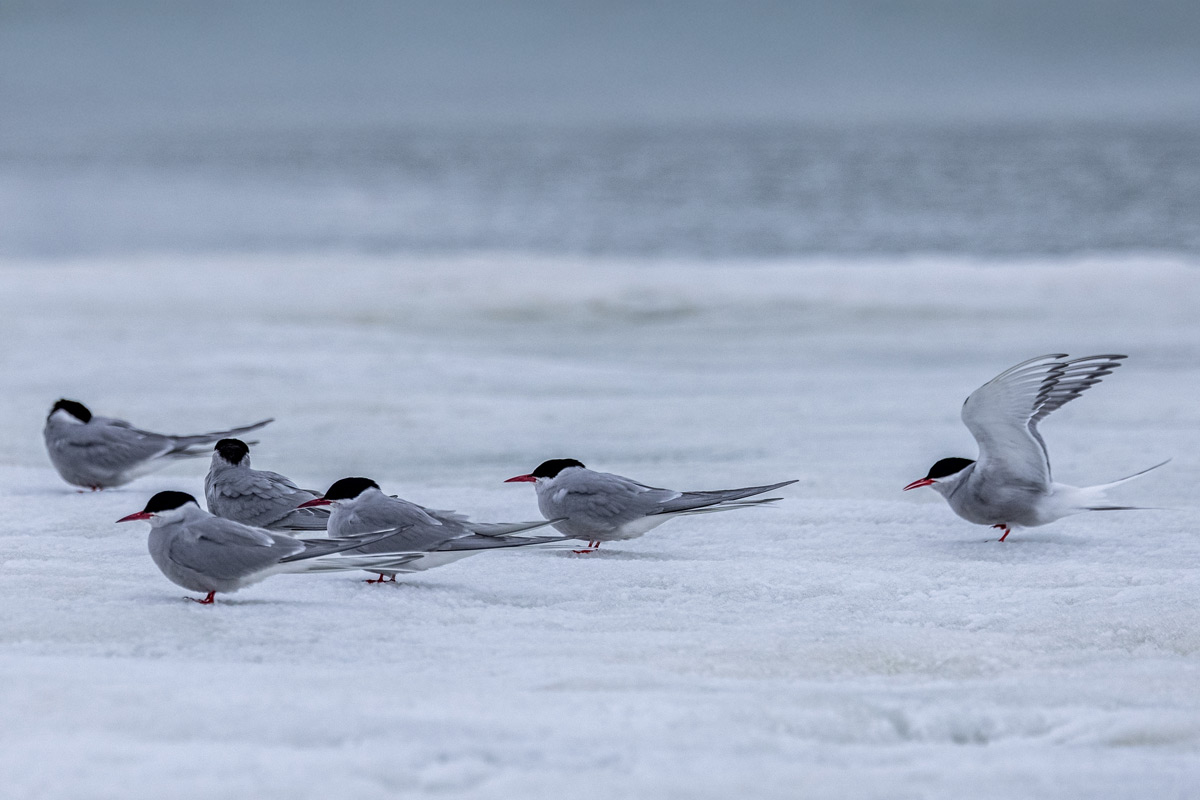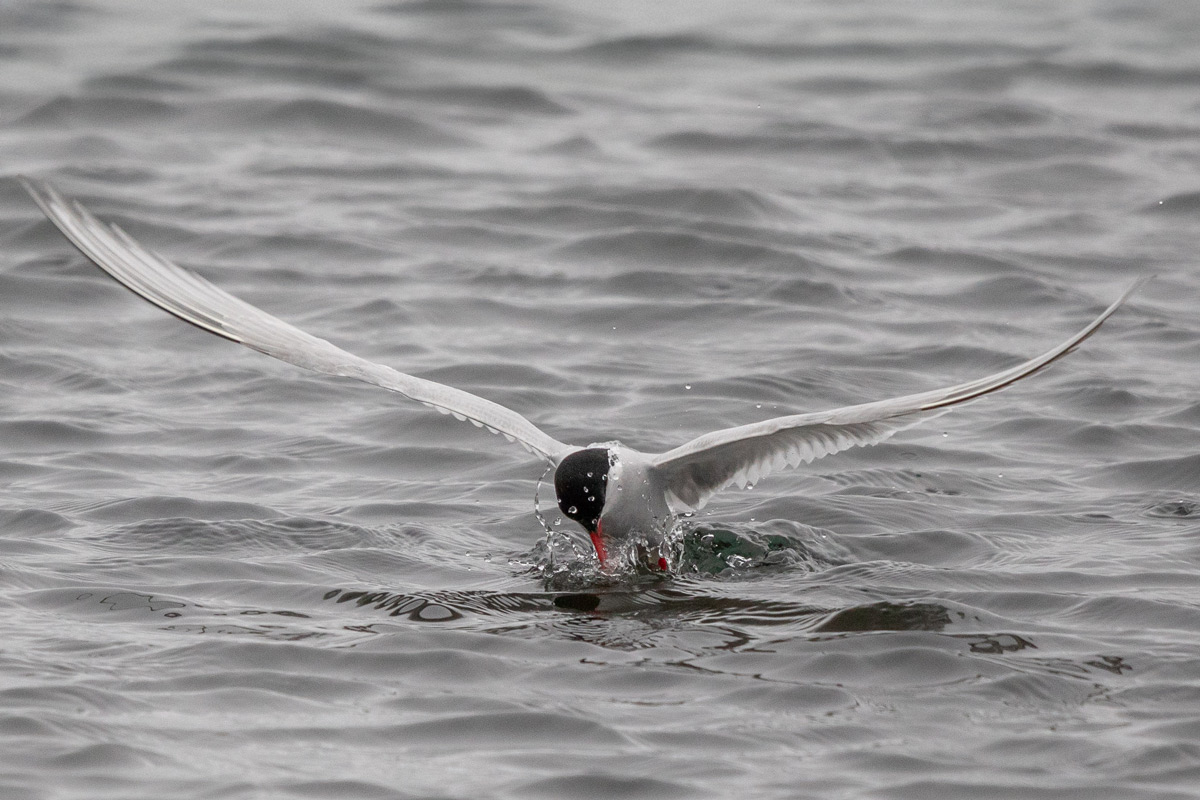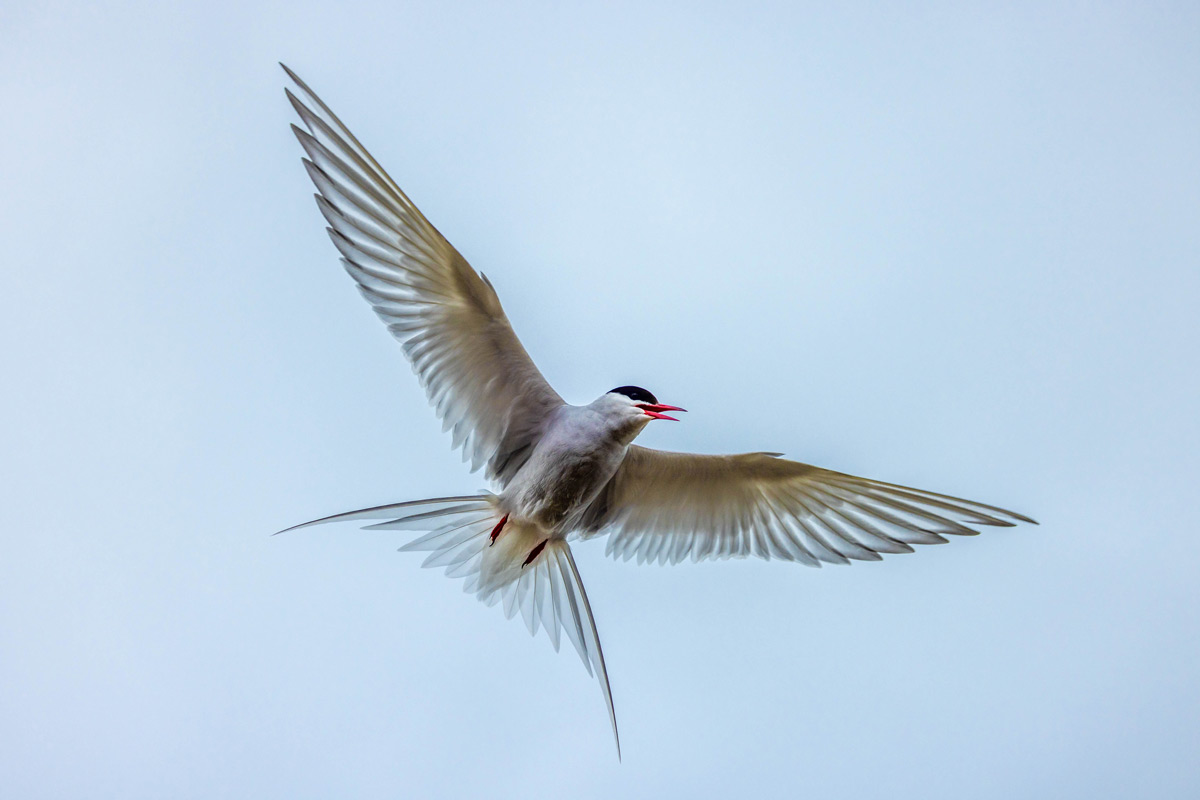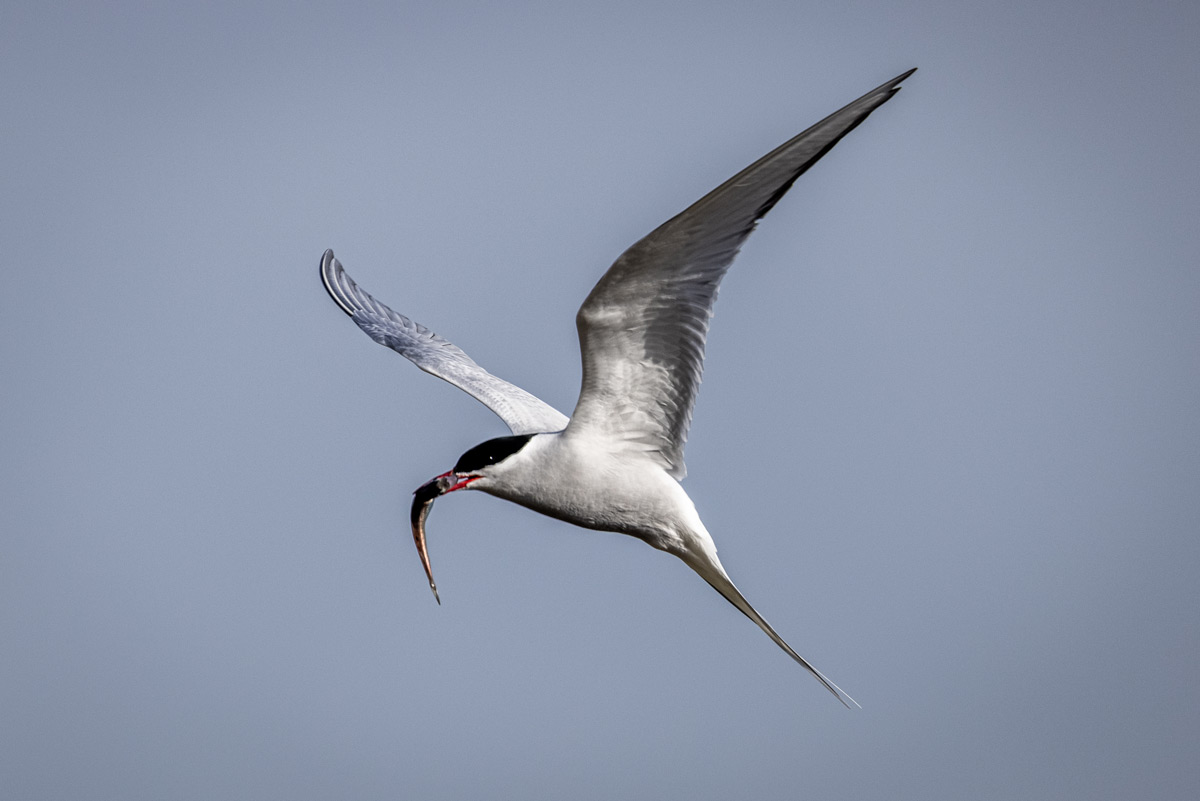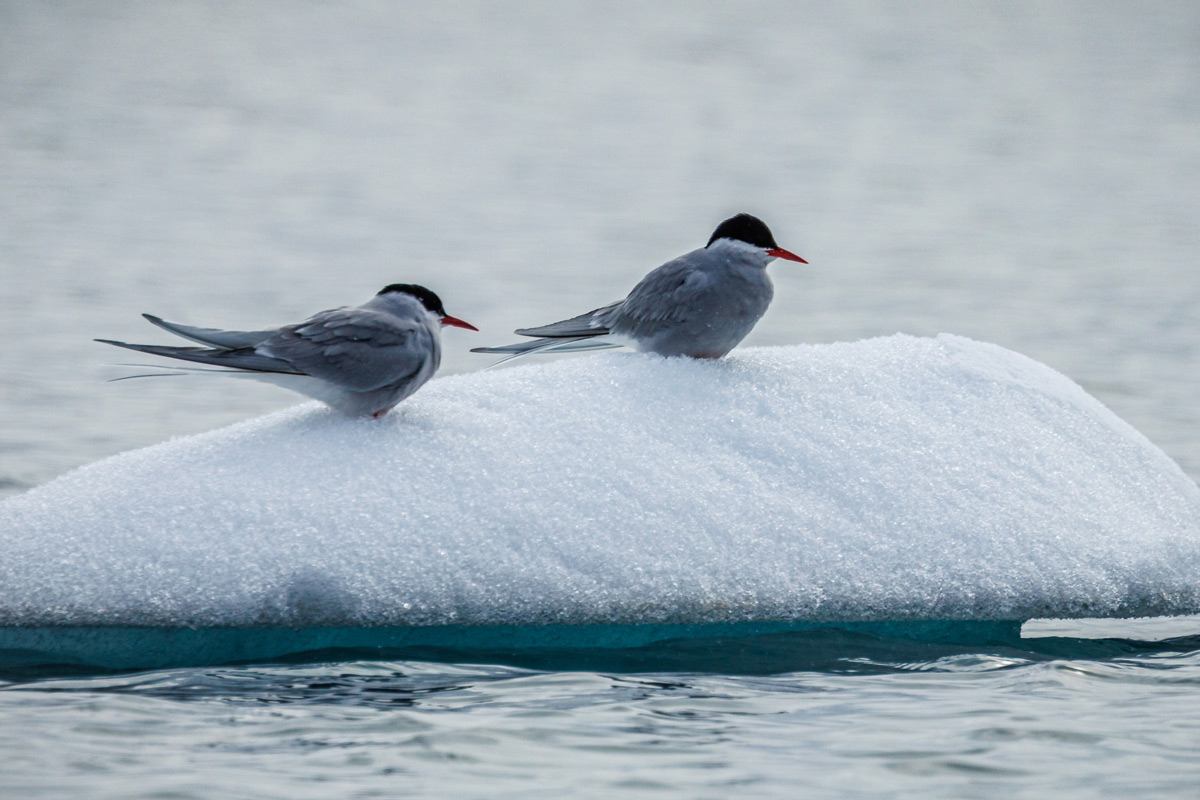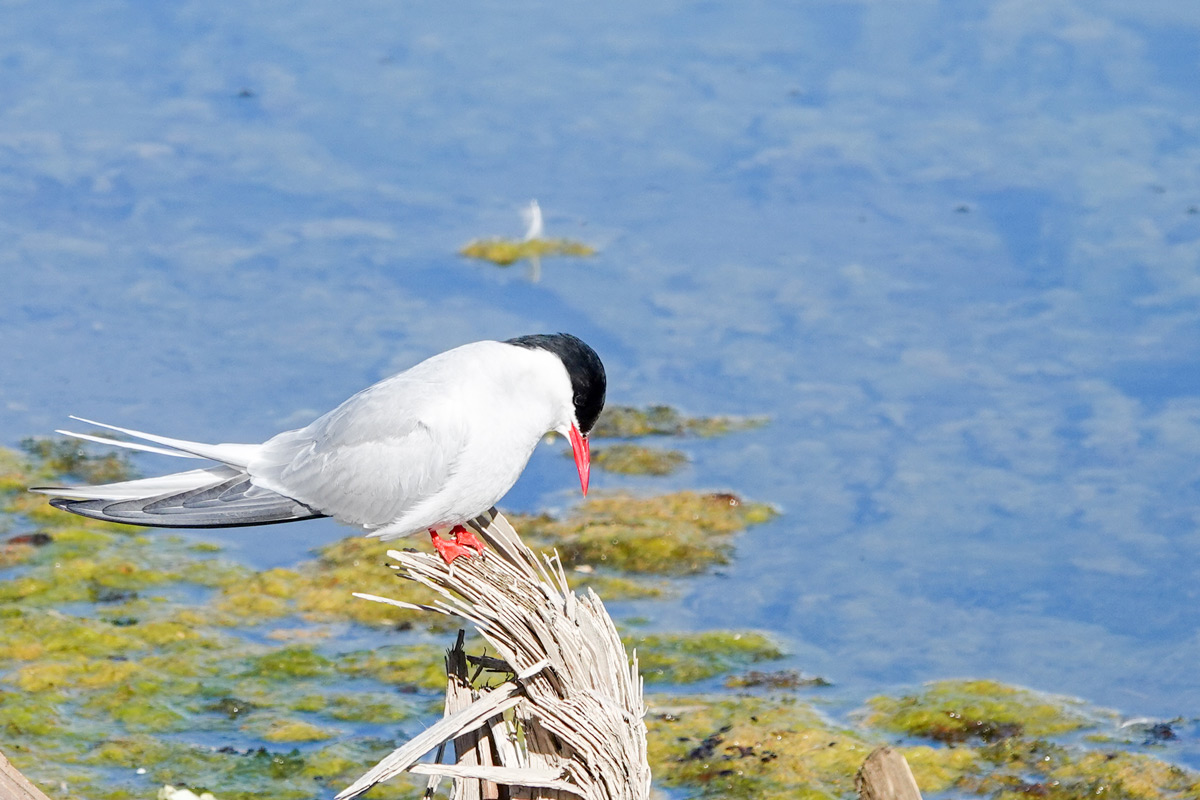Arctic Tern
They are elegant, beautiful and remarkable birds that fly extraordinary distances. Whether you embark on one of our journeys to the Southern or Northern Hemisphere, you might see this pole-to-pole traveller known for undertaking the longest migration routes of any bird or animal on Earth.
Who are we talking about? It is the Arctic tern, one of the most famous seabirds in the world, that spends most of its life migrating above the oceans and can be seen in both the Arctic and Antarctica. We always have a resident bird expert or an Ornithologist on board to offer insight and knowledge into the world of Antarctic birds.
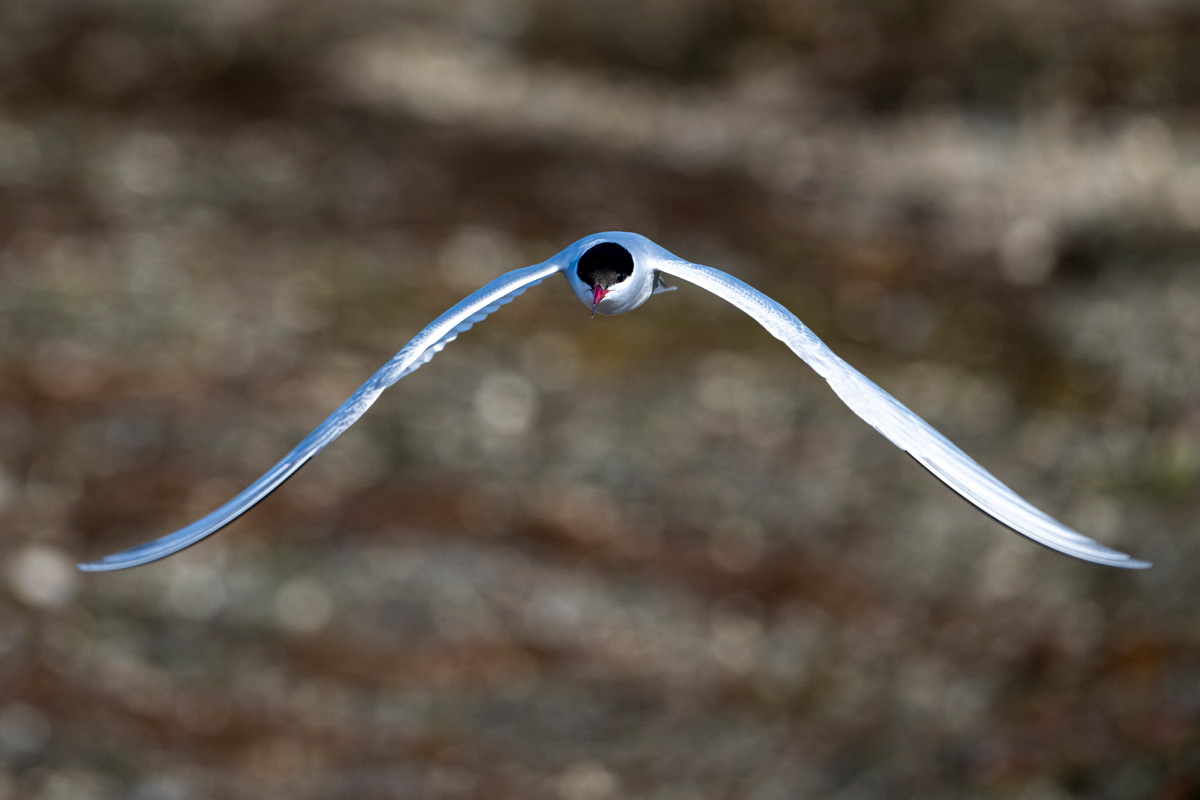
Arctic tern seen in Ny-Ålesund, a small town in Svalbard
Arctic Tern Quick Overview
| Scientific Name | Sterna paradisaea |
| Population | Estimated at close to 2 million globally |
| Regions | Arctic, sub-Arctic, and Antarctica |
| Destinations | Falkland Islands, South Shetland Islands, Antarctic Peninsula, South Georgia, Jan Mayen, Iceland, Canada, Svalbard, Greenland, Denmark, France, Norway, Spain, Portugal, England, Scotland, Argentina |
| Average Length | ~35 cm (13.8 in) |
| Average Weight | ~100–125 g (3.5–4.4 oz) |
| Diet Habits | Primarily small fish (Arctic cod) and pelagic crustaceans (krill); also feeds on insects during summer |
Questions Guests Ask About the Arctic Tern
What Do They Look Like?
The Arctic tern is a small tern species with both male and female looking alike in appearance. These beautiful birds are identifiable by their sharp red bill, red legs, a light grey back, a whitish belly, and a black cap. The tail is deeply forked, and the projecting outer tail feathers extend well beyond the wingtips when the bird is perched with its wings folded. The legs are short and orange-red. Non-breeding adults and juvenile Arctic Terns have grey and white feathers as well. Additionally, the hatchlings can be grey or brown, and chicks from the same parents aren’t necessarily the same color.
Where Does the Arctic Tern Live?
Arctic Terns nest in the Arctic during the winter months. They moult their feathers and rest on small blocks of ice at the edge of the pack ice, rarely flying. Due to their nesting and breeding behaviours, they prefer coastal areas and flat islands with little vegetation. Since they have a circumpolar distribution, their habitat ranges from breeding in the Arctic and then travelling to Antarctica to enjoy the Antarctic summer from about November to March. While migrating, they tend to stay out at sea. and take big detours in order to find better feeding grounds or avoid inclement weather. These migratory birds can be also spotted in coastal North America from late April through May as they return from Antarctica on their way back to their breeding grounds.
What Do Arctic Terns Eat?
Their diet primarily includes small pelagic crustaceans (krill) and small fish (Arctic cod) which they obtain by dive-bombing the water. In summer, their diet may also include insects.
Where Does the Arctic Tern Migrate To?
Surprisingly far from one another, their migration can range from the Arctic to Antarctica. When breeding, it is commonly seen on islands and coastal mainland areas of the High Arctic, as well as the North Pacific and North Atlantic south to 50 °N. In the eastern Atlantic, it breeds in Greenland and Iceland, the British Isles, the Baltic Sea, Norway (including Svalbard) and the Barents Sea region. When spotted on the coasts of Svalbard, it is mostly found on the western and northern parts of Spitsbergen. To take advantage of the summer in both hemispheres, the Arctic tern migrates to Antarctica during these months. When summer sunlight decreases in the Southern Hemisphere, they continue with their migration route and return to Svalbard in late May or early June and depart again between late August and mid-September.
Why Do They Migrate?
The Arctic tern’s migration path is explained by the fact that these birds follow the sun, experiencing two summers each year, one in the Arctic and one in Antarctica. They migrate to maximize feeding opportunities and reduce exposure to harsh winters. They are considered to have the longest migration route among all birds and animals, covering distances that can reach from 60 to 80,000 km (about 50,000 miles) annually between breeding and wintering areas. That’s the equivalent of THREE round trips to the moon and an estimated 2.4 million kilometres in their lifetime. Because of their migratory pattern, Arctic Terns see more daylight than any other animal in the world.
Are Arctic Terns Social Birds?
Yes! They are social birds that forage in groups and nest on the ground in large colonies having many social calls for each other as well as calls that identify them to other birds. These birds will ferociously defend their nests, so much so that even other bird species take advantage of their protection by building nests nearby.
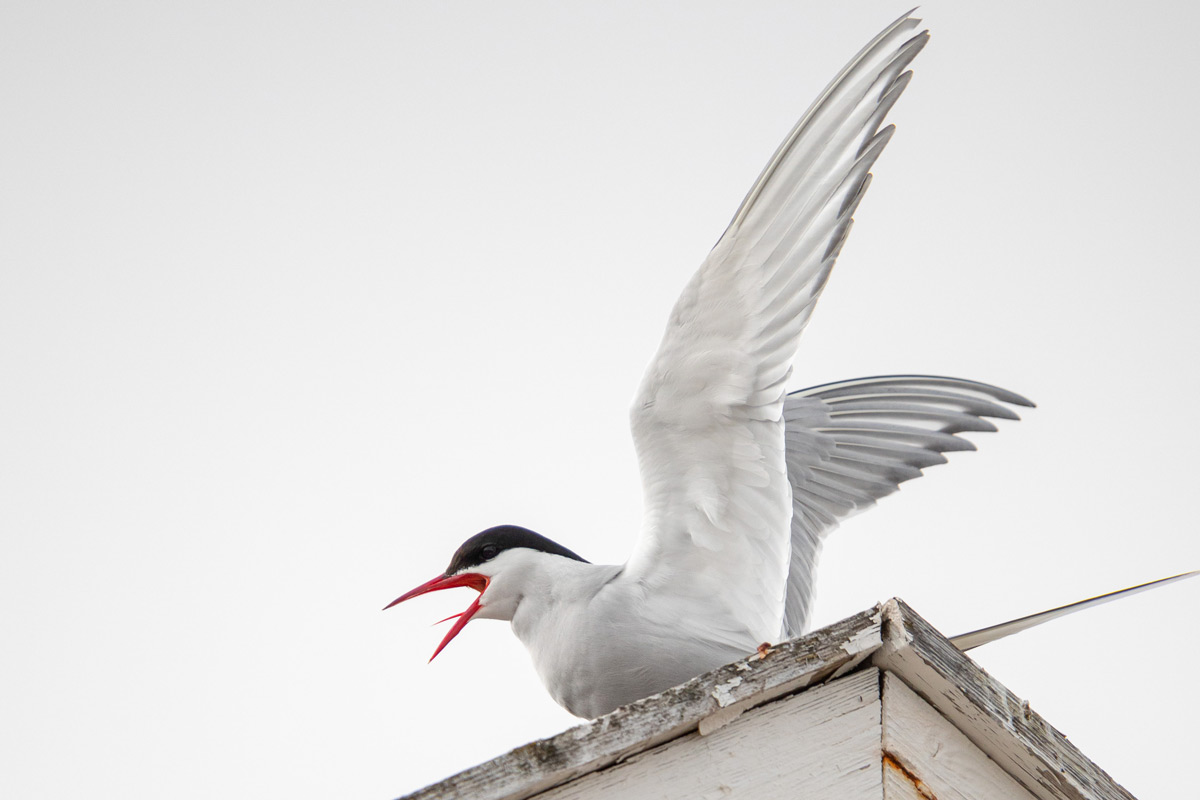
This migratory seabird produce various calls, particularly during foraging or takeoff
How Many of These 10 Arctic Tern Facts Did You Already Know?
- Their lifespan is approximately 30 years.
- The Arctic tern’s longest migration ever recorded was 96,000 km (59,650 miles).
- They usually lay 2-3 eggs, incubated by both mates.
- According to the IUCN Red List, they are classified as ‘Near Threatened’ species.
- Their main predators are gulls, cats and other small mammals.
- The sounds they make are a variety of harsh and shrill calls.
- Arctic tern wingspan size ranges between 64-76 cm (25-30 in).
- They are the northernmost of all the terns.
- The species is monotypic, exhibiting little geographical variation.
- Arctic tern adaptations include an aerodynamic body, long wings, and a lightweight frame.
Interested in an encounter with the spectacular Arctic Tern?
Reach out to our team to learn more about our voyages any time!

